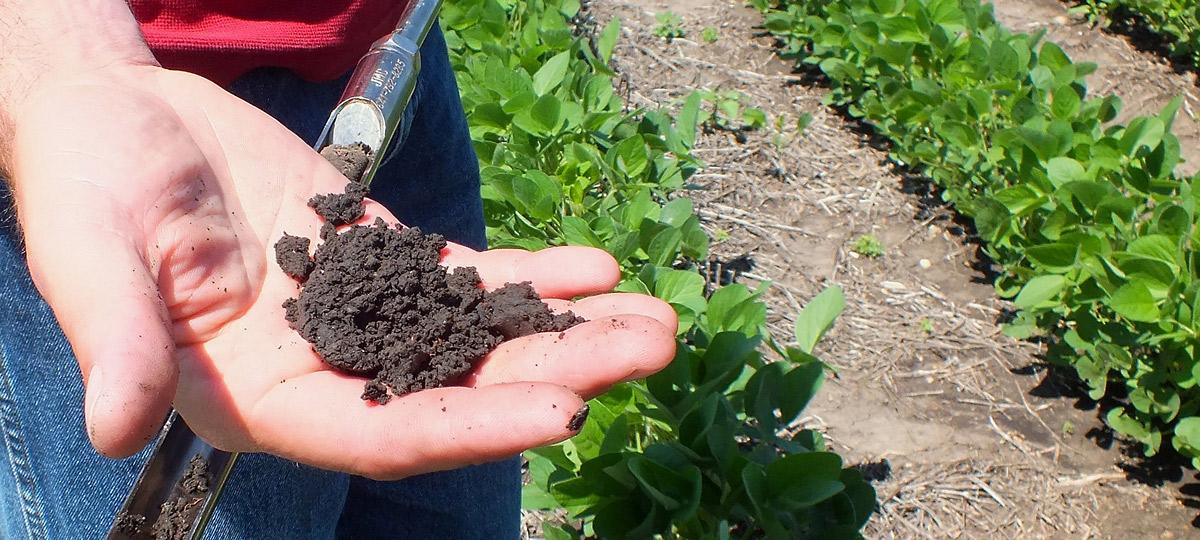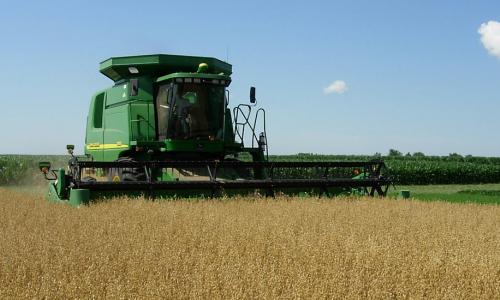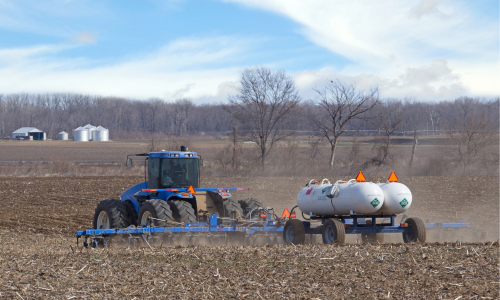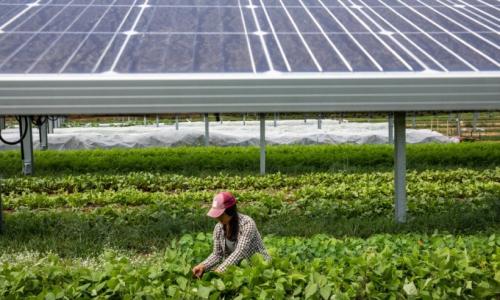Table of Contents
There’s a transformation taking place on farms across the United States.
For decades, we’ve produced the bulk of our food through industrial agriculture—a system dominated by large farms growing the same crops year after year, using enormous amounts of chemical pesticides and fertilizers that damage our soil, water, air, and climate. This system is not built to last, because it squanders and degrades the resources it depends on.
But a growing number of innovative farmers and scientists are taking a different path, moving toward a farming system that is more sustainable—environmentally, economically, and socially. This system has room for farms of all sizes, producing a diverse range of foods, fibers, and fuels adapted to local conditions and regional markets. It uses state-of-the-art, science-based practices that maximize productivity and profit while minimizing environmental damage. Sustainability also means the whole system is more resilient to droughts, floods, and other impacts of climate change that farmers are already seeing. Though the move to this type of system often involves some up-front costs, smart public policies can help farmers make the shift.
The best part? A growing body of scientific evidence has shown that a more sustainable model can be just as productive and profitable over time—and can meet our needs for the long haul.
Sustainable agriculture 101
OK, so sustainable agriculture is the wave of the future. But what is it, exactly?
Sustainability has many facets. Environmental sustainability, for example, means good stewardship of the natural systems and resources that farms rely on. This includes:
- Building healthy soil and preventing erosion
- Managing water wisely
- Minimizing air and water pollution
- Storing carbon on farms
- Increasing resilience to extreme weather
- Promoting biodiversity
An economically and socially sustainable agriculture system is one that enables farms of all sizes to be profitable and contribute to their local economies. Such a system supports the next generation of farmers, deals fairly with its workers, promotes racial equity and justice, creates access to healthy food for all, and prioritizes people and communities over corporate interests.
There’s a whole field of research devoted to achieving these goals: agroecology, the science of managing farms as ecosystems. By working with nature rather than against it, farms can avoid damaging environmental impacts without sacrificing productivity or profitability. And by prioritizing science that addresses the interconnectedness of environmental, economic, and social factors, we can create a truly sustainable system.
Sustainable agriculture practices
Through decades of science and practice, the following farming practices have proven effective in achieving sustainability, especially when used in combination:
Rotating crops and embracing diversity. Planting a variety of crops can have many benefits, including healthier soil and improved pest control. Crop diversity practices include intercropping (growing a mix of crops in the same area) and complex multiyear crop rotations.
Planting cover crops and perennials. Cover crops such as clover, rye, or hairy vetch are planted during off-season times when soils might otherwise be left bare, while perennial crops keep soil covered and maintain living roots in the ground year-round. These crops protect and build soil health by preventing erosion, replenishing soil nutrients, and keeping weeds in check, reducing the need for fertilizers and herbicides.
Reducing or eliminating tillage. Traditional plowing (tillage) prepares fields for planting and prevents weed problems but can cause soil loss. No-till or reduced-till methods, which involve inserting seeds directly into undisturbed soil, can reduce erosion and improve soil health.
Applying integrated pest management (IPM). A range of methods, including mechanical and biological controls, can be applied systematically to keep pest populations under control while minimizing use of chemical pesticides.
Integrating livestock and crops. Industrial agriculture tends to keep plant and animal production separate, with animals living far from the areas where their feed is produced, and crops growing far away from abundant manure fertilizers. A growing body of evidence shows that a smart integration of crop and animal production can make farms more efficient and profitable.
Adopting agroforestry practices. By mixing trees or shrubs into their operations, farmers can provide shade and shelter that protect plants, animals, and water resources, while also potentially offering additional income from fruit or nut crops.
Managing whole systems and landscapes. Sustainable farms treat uncultivated or less intensively cultivated areas as integral to the farm. For example, natural vegetation alongside streams, or strips of prairie plants within or around crop fields, can help control erosion, reduce nutrient runoff, and support bees and other pollinators and biodiversity in general.
What many of these practices have in common is their focus on soil. Keeping farm soils protected and teeming with living organisms can solve many of the problems associated with industrial agriculture. Healthy, living soil promotes healthy crops, holds water like a sponge, prevents pollution, and helps ensure that farmers and their communities can thrive.
Another key theme connecting many of these practices is diversification. When it comes to agriculture, the most sustainable and productive systems are more diverse and complex—like nature itself.

Sustainable agriculture science
The latest science—much of it coming out of research centers in the nation’s farm states—shows how agroecological practices can support productive, profitable farms. For instance, an ongoing study at Iowa State University’s Marsden Farm research center has shown that complex crop rotation systems can outperform conventional single-crop practices in both yield and profitability.
Crop breeding research is also crucial to the success of a more sustainable agroecological system, providing farmers with access to a broad range of crop varieties that can be readily adapted to farm-specific conditions and practices. Breeding research programs have dwindled in recent years, leaving farmers increasingly reliant on a limited set of varieties tailored to the needs of industrial farms.
To help farmers adopt sustainable practices, it’s vitally important that we continue to support agroecology research, along with outreach and education that can help farmers make effective use of the science.

Sustainable agriculture and farm policy
While US farm policy continues to devote the lion’s share of public resources to subsidizing the overproduction of corn and other commodity crops, there have been some encouraging steps toward sustainability. The most recent versions of the farm bill have included provisions to support more organic farming, to help fruit and vegetable farmers qualify for crop insurance, and to help farmers adopt more sustainable practices. In addition, the Agriculture Resilience Act (ARA) would invest in farmers’ ability to promote soil health and thrive in the face of 21st-century challenges such as climate change.
If we want to see sustainable farming become the dominant model in the United States, we need policies like those in the ARA—and we can’t stop there. UCS has published a series of reports and issue briefs offering recommendations for sustainable agriculture policies. Together, these recommendations can help transform our food system into one that provides healthy, affordable, and fairly and sustainably produced food for all Americans. We encourage you to take a look—and then contact your representatives to ask them to support these policies.




